
‘Syberberg is a great Wagnerian, the greatest since Thomas Mann, but his attitude to Wagner and the treasures of German Romanticism is not only pious. It contains more than a bit of malice, the touch of the cultural vandal. To evoke the grandeur and the failure of Wagnerism, Hitler, a Film from Germany, uses, recycles, parodies elements of Wagner. Syberberg means his film to be an anti-Parsifal, and hostility to Wagner one of its leitmotifs: the spiritual filiations of Wagner and Hitler. The whole film could be considered a profaning of Wagner, undertaken with a full sense of the gesture’s ambiguity, for Syberberg is attempting to be both inside and outside his own deepest sources as an artist. (The graves of Wagner and Cosima behind Villa Wahnfried recur as an image; and one scene satirizes that most ineffectual of profanations, when black American GIs jitterbugged on the graves after the war.) For it is from Wagner that Syberberg’s film gets its biggest boost—its immediate intrinsic claim on the sublime. As the film opens, we hear the beginning of the prelude to Parsifal and see the word GRAIL in fractured blocky letters. Syberberg claims that his aesthetic is Wagnerian, that is, musical. But it might be more correct to say that his film is a mimetic relation to Wagner, and in part a parasitic one—as Ulysses is in a parasitic relation to the history of English literature. Syberberg takes very literally, more literally than Eisenstein ever did, the promise of film as a synthesis of the plastic arts, music, literature, and theater—the modern fulfillment of Wagner’s idea of the total work of art. (It has often been said that Wagner, had he lived in the twentieth century, would have been a filmmaker.) But the modern Gesamtkunstwerk tends to be an aggregation of seemingly disparate elements instead of a synthesis.
‘For Syberberg there is always something more, and different, to say—as the two films on Ludwig he made in 1972 attest. Ludwig—Requiem for a Virgin King, which became the first film in his trilogy about Germany, pays delirious homage to the ironic theatricality and overripe pathos of such filmmakers as Cocteau, Carmelo Bene, and Werner Schroeter. Theodor Hirneis, the other film, is an austere Brechtian melodrama of ninety minutes with Ludwig’s cook as its one character—it anticipates the valet’s narrative in Hitler, a Film from Germany—and was inspired by Brecht’s unfinished novel on the life of Julius Caesar narrated by his slave. Syberberg considers that he began as a disciple of Brecht, and in 1952 and 1953 filmed several of Brecht’s productions in East Berlin. According to Syberberg, his work comes from “the duality Brecht/Wagner”; that is the “aesthetic scandal” he claims to have “sought.” In interviews he invariably cites both as his artistic fathers, partly (it may be supposed) to neutralize the politics of one by the politics of the other and place himself beyond issues of left and right; partly to appear more evenhanded than he is. But he is inevitably more of a Wagnerian than a Brechtian, because of the way the inclusive Wagnerian aesthetic accommodates contraries of feeling (including ethical feeling and political bias). Baudelaire heard in Wagner’s music “the ultimate scream of a soul driven to its utmost limits,” while Nietzsche, even after giving up on Wagner, still praised him as a great “miniaturist” and “our greatest melancholic in music”—and both were right. Wagner’s contraries reappear in Syberberg: the radical democrat and the right-wing elitist, the aesthete and the moralist, rant and rue. Syberberg’s polemical genealogy, Brecht/Wagner, obscures other influences on the film; in particular, what he owes to Surrealist ironiesnd images. But even the role of Wagner seems a more complex affair than Syberberg’s enthrallment with the art and life of Wagner would indicate.
‘Apart from the Wagner that Syberberg has appropriated, one is tempted to say expropriated this Wagnerianism is, properly, an attenuated affair—a fascinatingly belated example of that kind of art which grew out of the Wagnerian aesthetic: Symbolism. (Both Symbolism and Surrealism could be considered as late developments of the Romantic sensibility.) Symbolism was the Wagnerian aesthetic turned into a procedure of creation for all the arts; further subjectivized, pulled toward abstraction. What Wagner wanted was an ideal theater, a theater of maximal emotions purged of distractions and irrelevancies. Thus Wagner chose to conceal the orchestra of Bayreuth Festspielhaus under a black wooden shell, and once quipped that, having invented the invisible orchestra, he wished he could invent the invisible stage. The Symbolists found the invisible stage. Events were to be withdrawn from reality, so to speak, and restaged in the ideal theater of the mind.* And Wagner’s fantasy of the invisible stage was fulfilled more literally in that immaterial stage, cinema. Syberberg’s film is magistralrendering of the Symbolist potentialities of cinema and probably the most ambitious Symbolist work of this century. He construes cinema as a kind of ideal mental activity, being both sensuous and reflective, which takes up where reality leaves off: cinema not as the fabrication of reality but as “a continuation of reality by other means.”
‘In Syberberg’s meditation on history in a sound studio, events are visualized (with the aid of Surrealist conventions) while remaining in a deeper sense invisible (the Symbolist idea). But because it lacks the stylistic homogeneity that was typical of Symbolist works, Hitler, a Film from Germany has a vigor that Symbolists would forgo as vulgar. Its impurities rescue the film from what was most rarefied about Symbolism without making its reach any less indeterminate and comprehensive. The Symbolist artist is above all a mind, a creator-mind that (distilling the Wagnerian grandiosity and intensity) sees everything, that is able to permeate its subject; and eclipses it. Syberberg’s meditation on Hitler has the customary overbearingness of this mind, and the characteristic porousness of the overextended Symbolist mental structures: softedge arguments that begin “I think of…,” verbless sentences that evoke rather than explain. Conclusions are everywhere but nothing concludes.
‘All the parts of a Symbolist narrative are simultaneous; that is, all coexist simultanteously in this superior, overbearing mind. The function of this mind is not to tell a story (at the start the story is behind it as Rivière pointed out) but to confer meaning in unlimited amounts. Actions, figures, individual bias of décor can have, ideally do have, multiple meanings—for example, the charge of meanings Syberberg attaches to the figure of the child. He appears to be seeking, from a more subjective standpoint, what Eisenstein prescribes with his theory of “overtonal montage.” (Eisenstein, who saw himself in the tradition of Wagner and the Gesamtkunstwerk and in his writings quotes copiously from the French Symbolists, was the greatest exponent of Symbolist aesthetics in cinema.) The film overflows with meanings of varying accessibility, and there are further meanings from relics and talismans on the set which the audience can’t possibly know about.* (*For example, on Baer’s table Syberberg put a piece of wood from Ludwig’s Hundinghütte, the playhouse at Linderhof (it burned down in 1945) inspired by the designs for Act I of Die Walküre in the first two productions; elsewhere on the set are a stone from Bayreuth, a relic from Hitler’s villa at Berchtesgaden, and other treasures. In one instance, talismans were furnished by the actor: Syberberg asked Heller to bring some objects that were precious to him, and Heller’s photograph of Joseph Roth and a small Buddha can just be made out (if one knows they’re there) on his table while he delivers the cosmos monologue at the end of Part II and the long monologue of Part IV.)
‘The Symbolist artist is not primarily interested in exposition, explanation, communication. It seems fitting that Syberberg’s dramaturgy consists in talk addressed to those who cannot talk back: to the dead (one can put words in their mouths) and to one’s own daughter (who has no lines). The Symbolist narrative is always a posthumous affair; its subject is precisely something that is assumed. Hence, Symbolist art is characteristically dense, difficult. Syberberg is appealing (intermittently) to another process of knowing, as is indicated by one of the film’s principal emblems, Ledoux’s ideal theater in the form of an eye—the Masonic eye; the eye of intelligence, of esoteric knowledge. But Syberberg wants passionately wants his film to be understood; and in some parts it is overexplicit as in other parts it is encoded. The Symbolist relation of a mind to its subject is consummated when the subject is vanquished, undone, used up. Thus Syberberg’s grandest conceit is that with his film he may have “defeated” Hitler—exorcised him. This splendidly outrageous hyperbole caps Syberberg’s profound understanding of Hitler as an image. (If from The Cabinet of Dr. Caligari to Hitler, then why not from Hitler to Hitler, a film from Germany? The end.) It also follows from Syberberg’s Romantic views of the sovereignty of the imagination, and his flirtation with esoteric ideas of knowing, with notions of art as magic or spiritual alchemy, and of the imagination as a purveyor of the powers of blackness. Heller’s monologue in Part IV leads toward a roll call of myths that can be regarded as metaphors for the esoteric powers of cinema—starting with Edison’s Black Maria (“the black studio of our imagination”); evoking black stones (of the Kaaba, of Dürer’s Melencolia—the presiding image of the film’s complex iconography); and ending with a modern image: cinema as the imagination’s black hole. Like a black hole, or our fantasy about it, cinema collapses space and time. The image perfectly describes the excruciating fluency of Syberberg’s film: its insistence on occupying different spaces and times simultaneously. It seems apt that Syberberg’s private mythology of subjective cinema concludes with an image drawn from science fiction. A subjective cinema of these ambitions and moral energy logically mutates into science fiction. Thus Syberberg’s film begins with the stars and ends, like 2001, with the stars and a star-child. Evoking Hitler by means of myth and travesty, fairy tales and science fiction, Syberberg conducts his own rites of deconsecration: the Grail has been destroyed (Syberberg’s anti-Parsifal opens and closes with the word GRAIL—the films true title); it is no longer permissible to dream of redemption. Syberberg defends his mythologizing of history as a skeptic’s enterprise: myth as “the mother of irony and pathos,” not myths which stimulate new systems of belief. But someone who believes that Hitler was Germany’s “fate” is hardly a skeptic. Syberberg is the sort of artist who wants to have it both—all—ways. The method of his film is contradiction, irony. And, exercising his ingenious talent for naïveté, he also claims to transcend this complexity. He relishes notions of innocence and pathos—the traditions of Romantic idealism; some nonsense around the figure of a child (his daughter, the infant in Runge’s Morning, Ludwig as a bearded, weeping child); dreams of an ideal world purified of its complexity and mediocrity.
‘The earlier parts of Syberberg’s trilogy are elegiac portraits of lastditch dreamers of paradise: Ludwig II, who built castles which were stage sets and paid for Wagner’s dream factory at Bayreuth; Karl May, who romanticized American Indians, Arabs, and other exotics in his immensely popular novels, the most famous of which, Winnetou, chronicles the destruction of beauty and bravery by the coming of modern technological civilization. Ludwig and Karl May attract Syberberg as gallant, doomed practitioners of the Great Refusal, the refusal of modern industrial civilization. What Syberberg loathes most, such as pornography and the commercialization of culture, he identifies with the modern. (In this stance of utter superiority to the modern, Syberberg recalls the author of Art and Crisis, Hans Sedlmayr, with whom he studied art history at the University of Munich in the fifties.) The film is a work of mourning for the modern and what precedes it, and opposes it. If Hitler is also a “utopian,”as Syberberg calls him, then Syberberg is condemned to be a post-utopian, a utopian who acknowledges that utopian feelings have been hopelessly defiled. Syberberg does not believe in a “new human being”—that perennial theme of cultural revolution on both the left and the right. For all his attraction to the credo of romantic genius, what he really believes in is Goethe and a thorough Gymnasium education.
‘Of course, one can find the usual contradictions in Syberberg’s film—the poetry of utopia, the futility of utopia; rationalism and magic. And that only confirms what kind of film Hitler, a film from Germany really is. Science fiction is precisely the genre which dramatizes the mix of nostalgia for utopia with dystopian fantasies and dream; the dual conviction that the world is ending and that it is on the verge of a new beginning. Syberberg’s film about history is also a moral and cultural science fiction. Starship Goethe-Haus.
‘Syberberg manages to perpetuate in a melancholy, attenuated form something of Wagner’s notions of art as therapy, as redemption, and as catharsis. He calls cinema “the most beautiful compensation” for the ravages of modern history; a kind of “ redemption” to “our senses, oppressed by progress.” That art does in sorts redeem reality, by being better than reality—that is the ultimate Symoblist belief. Syberberg makes of cinema the last, most inclusive, most ghostly paradise. It is a view that reminds one of Godard. Syberberg’s cinephilia is another part of the immense pathos of his film; perhaps its only involuntary pathos. For whatever Syberberg says, cinema is now another lost paradise. In the era of cinema’s unprecedented mediocrity, his masterpiece has something of the character of a posthumous event.
‘Spurning naturalism, the Romantics developed a melancholic style: intensely personal, the outreach of its tortured “I,” centered on the agon of the artist and society. Mann gave the last profound expression to this romantic notion of the self’s dilemma. Post-Romantics like Syberberg work in an impersonal melancholic style. What is central now is the relation between memory and the past: the clash between the possibility of remembering, of going on, and the lure of oblivion. Beckett gives one ahistorical version of this agon. Another version, obsessed with history, is Syberberg’s.
‘To understand the past, and thereby to exorcise it, is Syberberg’s largest moral ambition. His problem is that he cannot give anything up. So large is his subject—and everything Syberberg does makes it even larger—that he has to take many positions beyond it. One can find almost anything in Syberberg’s passionately voluble film (short of a Marxist analysis or a shred of feminist awareness). Though he tries to be silent (the child, the stars), he can’t stop talking; he’s so immensely ardent, avid. As the film is ending, Syberberg wants to produce yet another ravishing image. Even when the film is finally over, he still wants to say more and adds postscripts: the Heine epigraph, the citation of Mogadishu-Stammheim, a final oracular Syberberg-sentence, one last evocation of the Grail. The film is itself the creation of a world, from which (one feels) its creator has the greatest difficulty in extricating himself—as does the admiring spectator; this exercise in the art of empathy produces a voluptuous anguish, an anxiety about concluding. Lost in the black hole of the imagination, the filmmaker has to make everything pass before him; identifies with each, and none.
‘Benjamin suggests that melancholy is the origin of true—that is, just— historical understanding. The true understanding of history, he said in the last text he wrote, is “a process of empathy whose origin is indolence of the heart, acedia.” Syberberg shares something of Benjamin’s positive, instrumental view of melancholy, and uses symbols of melancholy to punctuate his film. But Syberberg does not have the ambivalence, the slowness, the complexity, the tension of the Saturnian temperament. Syberberg is not a true melancholic but an exalté. But he uses the distinctive tools of the melancholic—the allegorical props, the talismans, the secret self-references; and with his irrepressible talent for indignation and enthusiasm, he is doing “the work of mourning.” The word first appears at the end of the film he made on Winifred Wagner in 1975, where we read: “This film is part of Hans Jürgen Syberberg’s Trauerarbeit.” What we see is Syberberg smiling.
‘Syberberg is a genuine elegiast. But his film is tonic. The poetic, husky-voiced, diffident logorrhea of Godard’s late films discloses a morose conviction that speaking will never exorcise anything; in contrast to Godard’s off-camera musings, the musings of Syberberg’s personae (Heller and Baer) teem with calm assurance. Syberberg, whose temperament seems the opposite of Godard’s, has a supreme confidence in language, in discourse, in eloquence itself. The film tries to say everything. Syberberg belongs to the race of creators like Wagner, Artaud, Céline, the late Joyce, whose work annihilates other work. All are artists of endless speaking, endless melody—a voice that goes on and on. Beckett wouldbelong to this race, too, were it not for some inhibitory force—sanity? elegance? good manners? less energy? deeper despair? So might Godard, were it not for the doubts he evidences about speaking, and the inhibition of feeling (both of sympathy and repulsion) that results from this sense of the impotence of speaking. Syberberg has managed to stay free of the standard doubts—doubts whose main function, now, seems to be to inhibit. The result is a film altogether exceptional in its emotional expressiveness, its great visual beauty, its sincerity, its moral passion, its concern with contemplative values.
‘The film tries to be everything. Syberberg’s unprecedented ambition in Hitler, a Film from Germany is on another scale from anything one has seen on film. It is work that demands a special kind of attention and partisanship; and invites being reflected upon, reseen. The more one recognizes of its stylistic references and lore, the more the film vibrates. (Great art in the mode of pastiche invariably rewards study, as Joyce affirmed by daring to observe that the ideal reader of his work would be someone who could devote his life to it.) Syberberg’s film belongs in the category of noble masterpieces which ask for fealty and can compel it. After seeing Hitler, a Film from Germany, there is Syberberg’s film—and then there are the other films one admires. (Not too many these days, alas.) As was said ruefully of Wagner, he spoils our tolerance for the others.’ — Susan Sontag
___
Stills
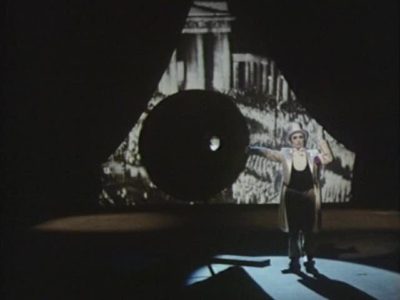
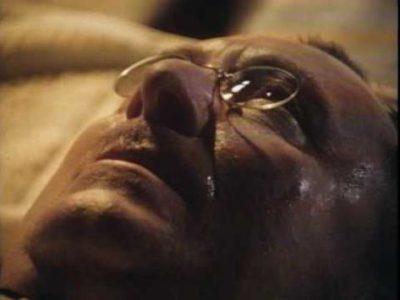




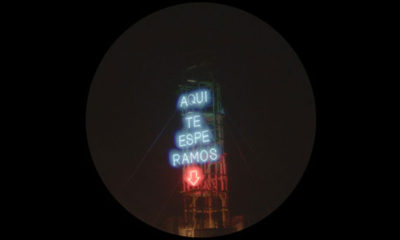

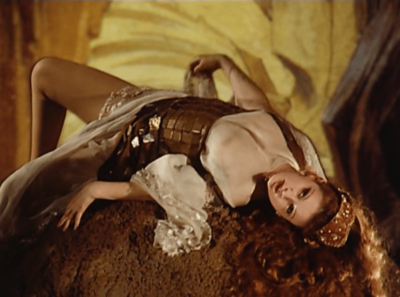

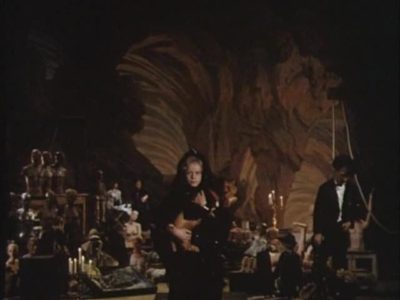
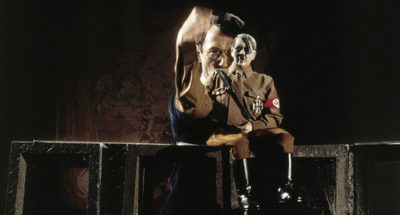





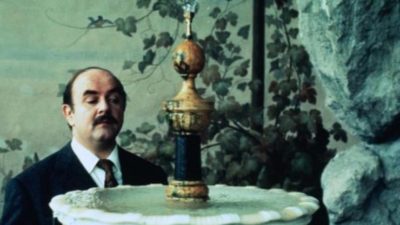
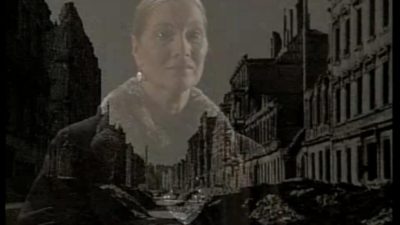
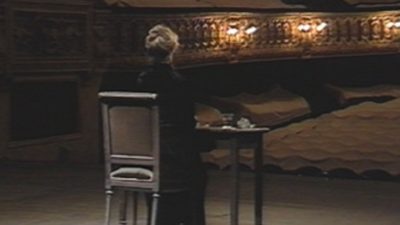


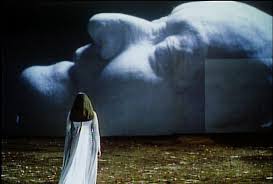




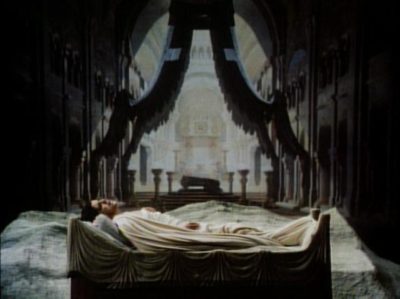
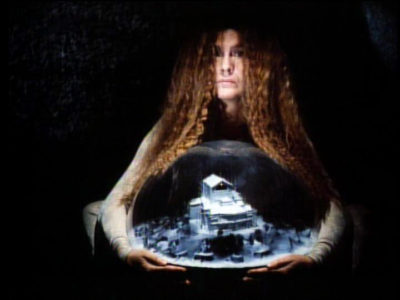
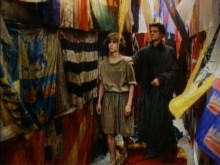
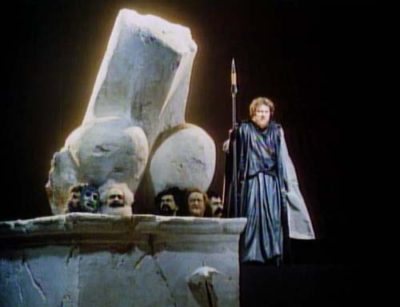


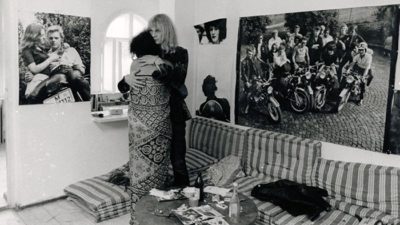
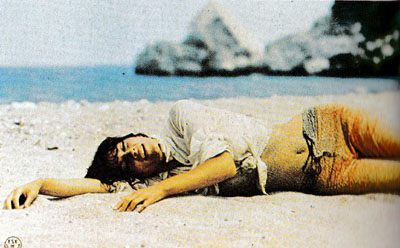
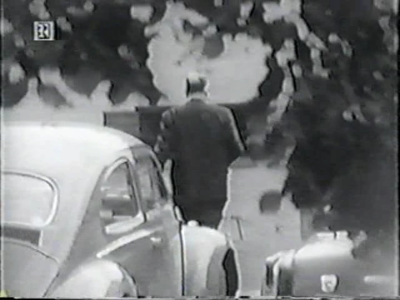
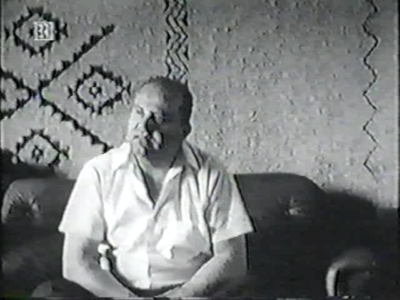



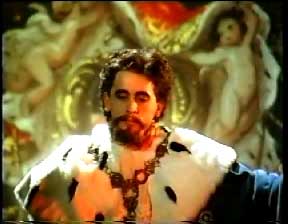




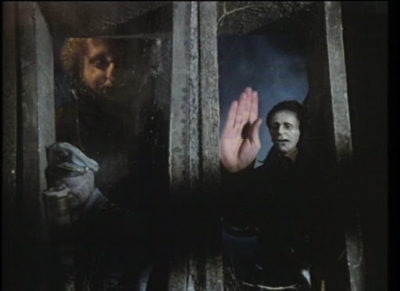


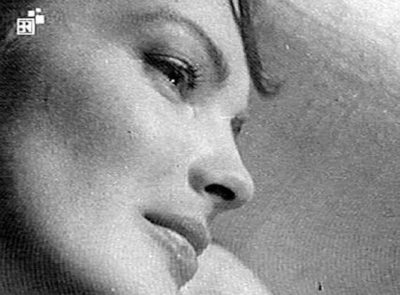

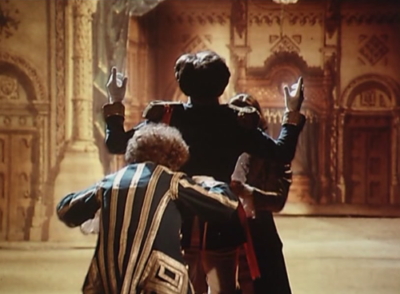
____
Further
Syberberg Site
Syberberg @ MUBI
Syberberg @ letterboxd
Merry Christmas From Hans and Adolph
‘Karl May’ @ Senses of Cinema
Hans-Jürgen Syberberg: An interview
Book: Hans Jurgen Syberberg And His Film Of Wagner’s Parsifal
Book: Francis Ford Coppola Presents Our Hitler: A Film from Germany
Book: Hans-Jurgen Syberberg, the Film Director as Critical Thinker
Return of the great dictator: Hans-Jurgen Syberberg
Syberberg Films Brecht
After More Than a Decade, Hitler Comes to Town
The Politics of Longevity: Hans-Jürgen Syberberg’s Essayism and the Art of Outliving Oneself
SYBERBERG FILMS STIR GERMAN CONSCIOUSNESS
How German Can It Be?
_____
Extras
EFA 2015 Hans Jurgen Syberberg
Hans-Jürgen Syberberg’s Hitler: A Film from Germany 1980 New York premiere
Conversazione con Syberberg
______
Interview
from revolver

Revolver: You once said that irrationality is one of the greatest strengths of German culture, a strength that has been lost. What happened to this thought?
Hans-Jürgen Syberberg: The concept of irrationality, which was of great concern to me over 20 years ago when I made the Hitler film, is no longer relevant to me today. I feel that this idea has been overtaken by current reality. But back then, after ’68, it was a real issue, fuel, if you just said the word. At that time I simply started from the question of what could be the opposite of reality, the opposite of enlightenment, which was so popular at the time. And so I got irrational. If you want to develop mentally, you always have to think the other way round – reverse what is currently being traded on the market. And I soon realized how fruitful it was when you wanted to encounter certain phenomena, especially in German history.And it is very productive to try to find aesthetic categories for it. Shaping and replicating life with artificial means is always an attempt to get a grip on reality. Art is not about simply reproducing life. You do that anyway by reproducing and living your life. But if you want to find a form in such a way that you understand life, that you rise above it and exalt it, you will have to try to use such terms.by reproducing and living your life. But if you want to find a form in such a way that you understand life, that you rise above it and exalt it, you will have to try to use such terms.by reproducing and living your life. But if you want to find a form in such a way that you understand life, that you rise above it and exalt it, you will have to try to use such terms.
Is this a plea for artificial film?
In the film, of course, everything is artificial in the sense that it is made to hold onto life. At the moment I am very interested in the use of the new techniques and these new techniques almost allow 1: 1 documentation of what is around. You don’t need a special light, you don’t need a team around you, so you can actually shoot anywhere. I can sit in the theater with a small camera – which I have already done – or in the cinema if the film can only be seen once at a festival. Some will say this is a big loss. I think it depends on what you do with it, because everyone has a pencil and a piece of paper on hand, but not everyone is a Brecht or Benn.
Her films go very far from the illusion machine cinema, which involves the viewer in a voyeur position. Many of her films tried to realize a kind of epic cinema in the Brechtian sense, completely anti-realistic.
If you look closely at the films, you will see that they are made very easy, and not just because there was so little money. These films are made up of the simplest of things. For example, the records of Hitler’s servant, that’s the simplest thing you can find in trivial literature, also in real literature. A servant report. Then I projected the environment he reports about. It was cheap because the reality no longer existed. But by putting him in there, the story gets a value that goes beyond the realistic.
The film has means to represent things very real, to make things visible at all, which is not possible in the theater or in the novel. But as soon as I cut, the viewer has to bridge pictures, that is, to establish a mental connection. The film works naturally with these connections, because the impression of movement only arises from the rapid succession of still images. From the start, film has been a medium that works with deception, with an eye defect. But you made something out of this mistake, a disadvantage became an advantage. And that’s how film always works when it’s smart.
For example, my film “Ludwig” was shot in the studio in ten days, at the same time as Visconti’s “Ludwig II”, and then lived from the fact that I didn’t have the budget and couldn’t shoot in the castles and then didn’t want to. The artificiality of the projections made it possible to create something that Visconti could not do with 12 million. In the projections of drawings of the unrealized locks, which show the idea of the entire Ludwig universe better than any reality, I then put people, mostly lay people, including rockers. At the time, this was perceived in Paris as the more interesting approach. My film appealed to the viewer’s mind. Even the people in France, who are less familiar with history than we did, immediately noticed that this is more reality than that,what old master Visconti tried to do at that time with a lot of effort. More reality in the sense of an exaggeration. I made Ludwig the opera figure he was, in a way, the last king of western history. I wanted to make a film in which you not only read or discover something, but also understand something …
You work with a wealth of references, sources and references …
Unfortunately – I can say – after my first attempts at film and theater I went to university and used the time there to acquire a lot of sources on history. I had teachers who put a lot of emphasis on that. Then there was my Brechtsche School. All of this combined made me like to examine things from many sides, so I tell fewer stories than story. One can say “tell”, but basically there is a pattern of images and sounds, divided into different chapters. That was the phase when I tried to make history like a kaleidoscope. After the Hitler film I broke it off – you can say that Parsifal was one of the last offshoots, but not quite so. I’ve got those things behind me.Today I’m interested in other things.
If you watch the Hitler film today, you can think of many references to today’s art, Cindy Sherman, Anselm Kiefer or films by directors who really like their films, such as Coppola’s “One from the heart” or Lars von Trier’s “Europe” . Films that attempt to incorporate this artificiality and these techniques – rear projection, for example – into popular cinema.
Yes, you can do a lot with this technique. But you are also a researcher if you practice reproducing reality – and that also means, of course, that you leave things behind. Of course, it happens that you invent something in your “research laboratory” that others then pick up – or build your systems on. Sometimes they take on something and change it so much that I startle. Where I think it comes from was meant quite differently. As for me, I always go a different way, with the risk of losing friends who are still happy with the old thing. And then you have to wait until it is understood, and it is often only understood when I am somewhere else again.
I was surprised by the response at Documenta in Kassel. I didn’t expect so many to understand that. I made a room with thirty-one 60-minute films that together make up one film. And this one film is the space you go through. But in such a way that if you move about walking, you get something heard and seen from all sides. You can stop or move on, leave the room or come back. It repeats itself after a certain time, but it keeps going and depending on where you start again, you are in a different place. This is actually a very strange situation that you find yourself in. People like to speak of the film of life that rolls in front of you. Actually, that’s what I did there.The idea of my film is actually not that of staring somewhere and something is being projected. I decide where to go, where to stop and how to combine it. This combination is actually the film.
Keyword “interactive film”. To what extent should viewers be able to influence what happens in the film?
Well, they do that by moving there or there according to their interests. You see the film like in the car the landscape: you can refer to it or not. Of course, the space is fixed. But they can also talk to the neighbor, it’s relatively loud, they don’t bother anyone. And they can get out, they can’t in the cinema.
But the concentration of the cinema is lost in such an arrangement.
No, that’s the difference. There is the technical arrangement as I have just described it, even with others – for example with Pipi Lotti Rist. It also makes rooms in which you move, and it uses some prefabricated things for it. That is – and it is important to it – relatively insignificant. Technically it is very similar, but mentally very different. With me you see what I want, what you should see, only you can decide where you want to stop. But if you follow the thing, it’s very organized, not arbitrary.
In conventional film, it is clear that when I see something is clearly organized. This chronology no longer exists in your film room.
I also feel that this is an imposition. You know that: you are sitting in a concert and suddenly you are gone and thinking of something completely different. I think it’s beautiful. You make combinations with your own experiences, that’s where the whole thing lives. Everything lives from the fact that you have to do something yourself.
There are films in which the relationship between viewer and director is almost dictatorial. And there are others, for example your Hitler film, where I feel I am allowed to take this story more important than that.
Of course, some action films do not allow anything at all and really force you into the editing sequence, and then you like it or not so much. But even with “Hitler”, if you accept the film at all, you are very challenged underground in your consciousness. You always have to think and if you think: “Aha, now I know how it works”, I usually do something completely different. I’m actually not letting you out so much.
At the time, they demanded with an impressive anger that one had to free oneself from the gunshot-to-gun dictatorship and understand the film as “music of the future”.
I thought about it again and wondered what was actually the voice of Germany in the concert of the peoples. And that’s how I got into music. Hollywood stands for narrative cinema, which they do quite well, France and Italy for a certain realism – we could maintain the aesthetics of the film that corresponds to the music. There are a lot of options. You can bring many instruments together or you can put an entire cosmos in one instrument alone. If you think carefully about which German films were particularly interesting and differed from others, then the way they were made was very musical. This is our chance. You don’t need a lot of money, but you would have to get rid of a lot of what is happening in the market today. And I don’t see that at all.Neither on television, nor in the funding guidelines, in the financing or in the subsequent awards. It would mean that you think completely differently.
What could a more musical television look like?
You could record entire theater evenings live, with a small camera like the one I have here (mini-DV), on my knees, in the first or second row. And I would then see the performance at home through the eye of a certain person, a special eye, a clever one that already comments with its look – you could do everything technically, that would be much cheaper, much more authentic, much more beautiful. Documentary reporting could also be done very differently. It is still the case today that an entire team approaches with an electronic camera, although one could do it alone. That would be a lot better. For example, the reporting in Kosovo, if you look behind the scenes, it’s always a cameraman, a sound engineer and one who stands in front of it commenting.In the end – which also happened – they sleep at night and 30,000 people are taken away during the night and the next morning nobody knows where they have gone. Even if the reporter is good, he can’t do anything because he doesn’t have the camera with him. The possibilities that technology gives us today are not being used.
So they demand, not least for reporting in crisis areas, that the makers live with their work.
I would ask that. He also specifies this when he is in front of the camera and tells me something. But he doesn’t and almost can’t because the system of his admission doesn’t allow it. If he had the camera alone, he would be better. It would be best to send other people over there. For example Handke, who is now running around in Kosovo and looking around on the Serbian side and can be filmed there – but he certainly does not have a camera with him. It would be very nice, of course, if he did not allow himself to be photographed, but instead took the camera himself and filmed it, in his view, which is very contradictory and personal. But why doesn’t he give it to him? Why doesn’t anyone go and say: “Here, take it, we’ll send it, you can do what you want. You don’t have to speak, just look!”I want to see his eye. One could also go further and say: “You are in Belgrade, where others cannot reach, plead for your client! But we would also like to see the other side, so take a camp. ” Surprisingly, no one maintains contact and does that. Everything is technically possible. A layman can handle such a camera.
You want to stay out of everything today, be objective.
That is the mistake. This “objectivity” is actually the dilemma.
A guerrilla tactic would not necessarily bring more information.
No, but it would be a chance for very special looks. How would it be if the clever one led there? If I were there, within 24 hours I would show something different from what we see every day.
Political thinking has become a marginal phenomenon in the film.
I actually think that’s good. It doesn’t have to be as cheap as in German film today. But I find the direct plea for a question of time boring. Things like “Germany in autumn”, that was pretty nice, but actually not very productive because it leads to the fact that in the end it secrets political correctness. If someone wants to make political films directly, there is of course a great risk that he will become afraid of his money and duck away. Or that he makes a confession, even in protest. That was the seductive thing, the trap of the 68s, that the contradiction became uniform again. You couldn’t contradict before, now you had to. And whoever threw shit was suddenly an artist because he disagreed. And those who were thrown also financed itbecause they showed how free they are. I find this compulsion that arises, this mechanism, that the best is who stinks best, is ridiculous. That leads to even more crippling. Because the contradiction must come where it really hurts. But if the rulers can finance the protest – that’s perverse. That makes political art unbelievable. For me, it is only credible if it risks something. You have to go so deep in the wound that you are suspected.But if the rulers can finance the protest – that’s perverse. That makes political art unbelievable. For me, it is only credible if it risks something. You have to go so deep in the wound that you are suspected.But if the rulers can finance the protest – that’s perverse. That makes political art unbelievable. For me, it is only credible if it risks something. You have to go so deep in the wound that you are suspected.
Again about film as the music of the future. What does this have to do with the new technology?
Very much. You can make films like music, even larger films – with the same freedom and simplicity. For example, this room in Kassel – I took it all myself, without a cameraman, without an assistant. Well, I had to go to Avid with someone who could. But that was the only help – the film was made by myself. If I needed anything, I went to the library, ordered a book and just filmed it page by page, alongside the others who read and took notes. Everything is illegal, of course. Legally, you can’t do it. Or I used catalogs, Troy in Moscow … the Memeling Altar in Gdansk – I didn’t go there, but instead I filmed a close-up of bad prints, after the music in the headphones, Requiem, Mozart.The whole room was like this – made with your own hand. Well, people didn’t realize how it was made, but it doesn’t matter. I also don’t have to be able to read the score to hear that the music is good. I think it will be a long time before these opportunities are really realized here. In schools, on television or in a museum context. I can reconstruct the Kassel film at any time, but who gives me the space? 12 x 30 meters, such spaces are occupied differently in museums. This art context is also tricky, because strictly speaking it is not a video sculpture like Bill Viola does, but a new way of working with film.I also don’t have to be able to read the score to hear that the music is good. I think it will be a long time before these opportunities are really realized here. In schools, on television or in a museum context. I can reconstruct the Kassel film at any time, but who gives me the space? 12 x 30 meters, such spaces are occupied differently in museums. This art context is also tricky, because strictly speaking it is not a video sculpture like Bill Viola does, but a new way of working with film.I also don’t have to be able to read the score to hear that the music is good. I think it will be a long time before these opportunities are really realized here. In schools, on television or in a museum context. I can reconstruct the Kassel film at any time, but who gives me the space? 12 x 30 meters, such spaces are occupied differently in museums. This art context is also tricky, because strictly speaking it is not a video sculpture like Bill Viola does, but a new way of working with film.but who gives me the space? 12 x 30 meters, such spaces are occupied differently in museums. This art context is also tricky, because strictly speaking it is not a video sculpture like Bill Viola does, but a new way of working with film.but who gives me the space? 12 x 30 meters, such spaces are occupied differently in museums. This art context is also tricky, because strictly speaking it is not a video sculpture like Bill Viola does, but a new way of working with film.
I am surprised that you see a solo art in the film. Isn’t it one of the great advantages of the medium that you work together?
I am at an age when I am no longer looking for this company so much. It’s also a question of money. But you could also work differently. On the contrary, I used to fight very much for it – in my early, combative phase – that, like at UFA or DEFA, you create standing teams, groups of people who stay together. I was a big sponsor of organizational units like theater. Sometimes a different script, sometimes a different director, but the group stays together. Our system did not allow that, perhaps also because one wanted to get away from the UFA and the DEFA was a bogeyman – but that didn’t mean it had to be that bad. I could imagine that it’s a lot of fun to work in groups like this, much more than it’s today,wherever it fluctuates and it is so terribly expensive. If you imagine that Eisenstein has often worked on a project for years!
Nobody comes up with the idea of founding the Philharmonic for every concert anew. I think discontinuity is one of the biggest problems in German film.
I jump over it thinking differently. One would have to use the new technical possibilities more productively, in such a way that others have something from us and can learn something. You would have to invent something where we are faster and more agile than the others.
In our generation, this awareness of a common German film hardly seems to me anymore.
But it’s true: Hollywood is an American product, even if people from other countries work there. But we are here. So we always have to think about where our strengths lie. Just like I think that man and woman are different and have different strengths. And if you want to be good, you have to know your strengths.
Do you see opportunities on TV with all the channels that are still waiting for us for the new technologies?
Surprisingly, television doesn’t go into these things. Although television has more and more channels, it has fewer and fewer slots. It would be so easy. For example, I made a film that also ran in Kassel – I could imagine it on TV, but I don’t find a friend for it. I simply took a handwritten score from Mozart, at least the last one, the requiem, and then asked a pianist to read this score on her piano with my finger. And then I took the small camera and simply filmed the score note by note after the recorded CD in daylight. Word for word, note for note, always with your finger on the Latin text and depending on whether it was the choir or the soloists, it is sometimes the bass,times gone to old. So we recorded the whole score, 45 minutes. It happened very quickly, it didn’t take more than an hour. And that’s fantastic, you can hear the music and understand something that you otherwise don’t understand. You can see Mozart’s handwriting, the last thing he wrote, sick in bed, shortly before his death – you can’t do that in a concert. Nowhere else can you do that, I can’t even do that so well at home. Such a simple idea – nobody sends. They don’t understand what I’m saying. They send boring transmissions, you can see these inflated faces with their instruments – that’s boring. I’m not saying it’s badly received, but conceptually boring.it didn’t take more than an hour. And that’s fantastic, you can hear the music and understand something that you otherwise don’t understand. You can see Mozart’s handwriting, the last thing he wrote, sick in bed, shortly before his death – you can’t do that in a concert. Nowhere else can you do that, I can’t even do that so well at home. Such a simple idea – nobody sends. They don’t understand what I’m saying. They send boring transmissions, you can see these inflated faces with their instruments – that’s boring. I’m not saying it’s badly received, but conceptually boring.it didn’t take more than an hour. And that’s fantastic, you can hear the music and understand something that you otherwise don’t understand. You can see Mozart’s handwriting, the last thing he wrote, sick in bed, shortly before his death – you can’t do that in a concert. Nowhere else can you do that, I can’t even do that so well at home. Such a simple idea – nobody sends. They don’t understand what I’m saying. They send boring transmissions, you can see these inflated faces with their instruments – that’s boring. I’m not saying it’s badly received, but conceptually boring.sick in bed, shortly before his death – you can’t do that in a concert. Nowhere else can you do that, I can’t even do that so well at home. Such a simple idea – nobody sends. They don’t understand what I’m saying. They send boring transmissions, you can see these inflated faces with their instruments – that’s boring. I’m not saying it’s badly received, but conceptually boring.sick in bed, shortly before his death – you can’t do that in a concert. Nowhere else can you do that, I can’t even do that so well at home. Such a simple idea – nobody sends. They don’t understand what I’m saying. They send boring transmissions, you can see these inflated faces with their instruments – that’s boring. I’m not saying it’s badly received, but conceptually boring.but conceptually boring.but conceptually boring.
I find it characteristic that such things only work in an art context.
Unfortunately. It is a loss for the film. This is also due to the fact that it is not taught at film schools and is not financed by the millions of film funding, even though the money would be there. There is not even the possibility of showing electronic film – that is completely excluded. In the film museums, everything is devil’s stuff that is not celluloid.
It is also the case in art that only a few art movements have prevailed among the public, while others – such as conceptual art – have remained extremely unpopular.
But with 30 channels there should actually be possibilities. I think there are already people who would be interested in it. What you read about Lars von Trier in your magazine gave me courage. That there are other people in the world who have similar thoughts.
I think one of the main problems is the viewers, who can no longer or do not want to really deal with the content.
Yes, I thought so too. I was desperate about the situation of the people, not only the so-called decision-makers in the media and funding systems, but also the people in the middle who consume for themselves. And then I was surprised in Kassel. I feel like people are much freer and smarter if you let them. You just don’t let them. The patronage is so strong.
Herzog says he cannot work in Germany because there is no courage, no ideas, no life.
Well, I don’t play anymore. There is little drive to interfere. The last book I made was never published. I just made a self-print, a few copies for friends … Not because it was so explosive, but because it does next to nothing, not in the sense of productive opposition. Hardly anyone learns anything from me. Herzog went to America and I leave by staying in my four walls.
What is film for you?
The film works very strongly with the switching processes in the brain. I see something and react to it. I get something delivered and have to deal with it. Art and film live from mistakes. But it is not just a question of correcting and repairing it, but of overcoming the crisis. And we enjoy this creative power that comes from coping with the tragedy. That is what we then perceive as a human feat. The craft changes, the technology renews, but this core remains.
What are your next plans?
I manage my things. Next I will show a few films from Kassel in New York and Buenos Aires. I’m curious to see how it works, because it wasn’t actually made for the normal cinema screen. And I do a lot for me. The Oskar Werner book mentioned for example, “Last things” it says. I could still imagine huge projects, but nobody wants it. I am interested in the Berlin debate about the reconstruction of the castle. I could imagine building a large black cube with projection rooms right there. The whole of Prussian history in the form of projections, a virtual Prussia.
How important is recognition for an artist?
Actually essential. But the legend is also something. That means not to exist in reality but in virtuality.
What would you like to give aspiring filmmakers?
You have to change the systems again. For me, cinema today is almost like theater, dead. You are forced into a form that is not life. There are still nice films today, but people, including viewers, are in a tight corset. People who look in one direction in the dark for 90 minutes – that’s all very narrow when you think about the possibilities that technology offers. Film can do much more. I think you should always consider the opportunities that aren’t Hollywood. Find a mode of production, a technique that doesn’t compete except in quality. And then I would just be lively and be incredibly cheeky.
______________
9 of Hans-Jürgen Syberberg’s 25 films
______________
Fritz Kortner spricht Shylock (1966)
‘The great actor, film and theater director Fritz Kortner (1892-1970) plays and comments on individual monologues of his “life roles”: Shylock (from Shakespeare’s “The Merchant of Venice”) and “Richard III”. He also comments on why he never played “King Lear” (filmed by Hans-Jürgen Syberberg recording for a record, Munich 1966.)’
the entirety
______________
San Domingo (1970)
‘San Domingo is about a young hippie called König who is the son of a super-rich couple, but has dropped out. He seems to be working in botanical gardens and then he goes out into the countryside and ends up on a biker / hippie / anarchist commune. The bikers convince a young woman called Carla to throw herself at him and preoccupy his time whilst they ask his parents for a large ransom without ever technically kidnapping him. König has a fixation with Africa as some sort of ideal land, although he has never been there. His love for Africa is like the painter Rousseau’s, influenced by picture books and botanical gardens, the reality of things like famine (this film was shot at the end of the Nigerian famine and beginning of the Ethiopian one) and civil wars or wars of independence and their associated atrocities hardly impinge on his consciousness. Relatedly part of Carla’s allure may be her black skin, although as König is naive and inexperienced, and she is extremely worldly, experienced and throwing herself at him, not much extra allure is needed. König’s name is ironic (German for king), he has a kind of long aristocratic 17th century haircut and he very much has the Antoinette-ish “let them eat cake” deal going on: he sits in with Carla when she interviews with a personnel manager and argues about employment, trying to make the case that people should be able to do whatever they want, and that jobs should be created to manage for this.’ — oOgiandujaOo and Eddy_Merckx
Excerpt
Excerpt
Excerpt
______________
Ludwig – Requiem for a Virgin King (1972)
‘The first part of Syberberg’s remarkable trilogy (followed by Karl May and Hitler, a Film from Germany), this takes the legend of Ludwig II of Bavaria (Wagner’s patron, virgin homosexual, mad visionary, builder of impossible castles, aesthetic recluse) and filters it through the subsequent chaos of German history: the rise of Bismarck and the Prussians at the turn of the century, and the rise of Hitler in the ’30s. It’s constructed as a series of 28 tableaux, which makes it more like a pageant than a conventional drama: it’s full of deliberate disjunctions and contradictions (both Wagnerian stage designs and modern video footage are used as back-projections, for instance), and it feels free to use elements of kitsch (a Nazi rhumba) alongside moments of ‘high art’ (Isolde’s Liebestod) without apparent distinction. The slow pace and ultra-mannered staging compel either fascination or outright rejection. Those fascinated are rewarded with constant surprises and delights, because it’s one of the most beautiful and defiantly original movies of the ’70s.’ — Time Out (London)
Excerpt
Excerpt
_____________
Theodor hierneis oder: wie man ehemaliger hofkoch (1973)
‘This movie tells a story of a court cook under King Ludwig II based on the memoir of the cook. This memoir can be easily adapted to make a costume-period movie, but Syberberg didn’t choose that way. He chose to have a narrator walking through many beautiful palaces in the present time, quoting the memoir and giving his own comments from time to time. All is said in monologue. Thus, this movie has both the feelings of seeing a documentary and reading a book at the same time, but it also gives so many other feelings. One of the many good things about this movie is its humour. Because the memoir tells about the madness of King Ludwig, one can’t help laughing a lot at his crazy activities, but still feels sympathy for his servants. Apart from this amusement which can also be achieved by a much-more-expensive costume-period movie, I am more impressed by what this movie can achieve, but costume-period movie can never achieve.’ — sleepsev
Excerpt
_______________
Karl May (1974)
‘Syberberg’s film on May is not a conventional biopic. It is not a traditional emotive epic, or a work of hagiography or character assassination. The narrative uses his last ten years as a way of exploring the significance of his life, rather than as a way of celebrating or denigrating it. Scenes are more individual tableaux than elements of a continuing narrative, but all have their own richness and particular role. For example, in the opening ten minutes of the film May participates in a rather stagy and pompous lecture presentation while incongruously tricked up in an adventurer’s costume, looking more appropriate for a fancy-dress party than for a trek through the wilderness.’ — Peter Hourigan
Excerpt
_______________
The Confessions of Winifred Wagner (1976)
”He had that perfect Austrian warmth and understanding’: Winifred Wagner (78-year-old widow of Richard Wagner’s son Siegfried) on the human face and personal charm of Adolf Hitler. Hitler’s passion for Wagner inevitably led him to Winifred, organiser of the Bayreuth Festival. During their 22-year friendship, to whose memory she is stubbornly faithful, Hitler doted on her family and mentioned nothing of politics: ‘I would say he was too easily influenced and gave in to radical demands,’ is her only criticism, made apparently without irony. This film features Winifred Wagner’s first interview (shot almost entirely in medium close-up) about Hitler as a patron of the arts. It’s an extraordinary document – about the role of art in a society, about its relation to politics, and about degrees of unawareness. The original cut ran five hours.’ — Time Out (London)
the entirety
________________
Hitler: A Film from Germany (1977)
‘”The most extraordinary film I have ever seen,” says Susan Sontag of director Hans-Jurgen Syberberg’s epic nightmare rumination on Adolf Hitler, the cultural mechanisms underlying his mythic rise, and the effect he continues to wield over Germany. In a series of 22 tableaux set on a soundstage, Syberberg makes use of puppets, props, a thundering Wagnerian soundtrack, and rear-screen projection to evoke the origins of the Third Reich, Nazi Germany, and the disturbing aftermath. Neither a feature film nor a conventional documentary, Hitler: Ein Film aus Deutschland is a seven-hour avant-garde fever dream on coming to terms with Nazism. Originally distributed by Francis Coppola”s Zoetrope Studios, this notorious film was hailed by Coppola as a work that rendered all other films of the time obsolete.’ — Facets Edge
the entirety
______________
Parsifal (1982)
‘Syberberg’s monumental and celebrated film about Wagner’s music-drama Parsifal was released to coincide with the centenary of Wagner’s death. Syberberg made his film entirely in a studio, like his previous films Ludwig: Requiem for a Virgin King (Ludwig: Requiem für einen Jungfraülichen König) and Hitler: A Film from Germany (Hitler: ein Film aus Deutschland). The resources of a film studio allowed Syberberg to film the opera against a constantly shifting screen of references and allusions shown by front-projection, thus imprinting his own vision of Parsifal and Richard Wagner in a manner of which a stage-director could only dream, whilst also having the other advantage of film, that of showing in close-up the emotion of the opera in the faces of his actors and actresses.
‘Syberberg worked on the project for several years before it could be realised. After completing Hitler: A Film from Germany, he searched for a project that would be, as he called it, less Syberberg. Almost alone among German artists, Syberberg has constantly sought to explain and uncover the romantic and irrational in German culture, now ignored or suppressed because of Hitler, the bitter flower of German irrationalism as Syberberg has called him. Wagner has always been a constant presence in Syberberg’s films, both in Ludwig and Hitler (because of their respective obsession and passion for his music), and of course in The Confessions of Winifred Wagner (Winifred Wagner und die Geschichte des Hauses Wahnfried von 1914-1975), where the unrepentant old lady talks on about the good old days at Bayreuth when the Führer made his annual pilgrimage to the shrine. It was inevitable that Syberberg should come to make a film about Wagner himself. His first idea was just that, a film about Wagner, but gradually the Parsifal project took root. He had intended to try to use a recording from a Bayreuth performance as the soundtrack to his Parsifal film, but after the Winifred Wagner film, he was none too popular with the Wagner family, and permission for him to record in Bayreuth was refused.’ — Monsalvat
Excerpt
Excerpt
Excerpt
_______________
Die Nacht (1985)
‘Die Nacht (“The night”) is a 1985 West German installation film directed by Hans-Jürgen Syberberg. It consists of a six hours long monologue performed by Edith Clever, who reads texts by Syberberg and many different authors, such as Johann Wolfgang von Goethe, Heinrich von Kleist, Plato, Friedrich Hölderlin, Novalis, Friedrich Nietzsche, Eduard Mörike, Richard Wagner, William Shakespeare, Martin Heidegger, Samuel Beckett and chief Seattle. The film was screened out of competition at the 1985 Cannes Film Festival.’ — Wikipedia
Excerpt
*
p.s. Hey. ** David Ehrenstein, Curious segue there. Everyone, New on Mr. Ehrenstein’s FaBlog: Terry Gilliam’s Guide To Portland. ** Misanthrope, Hi. Well, really, you know, it’s great you believe in him, and he’s very lucky that you do. You have to follow your heart without discrediting your brain, I guess. I hope the perfect imperfect car shows up. ** Ferdinand, Hi. Oh, I only glanced at your piece so far, but it looks great! Everyone, Here’s Ferdinand. Please read and do as he suggests. F: ‘Last night while playing The Cure album Wild Mood Swings I realised it was 22 years ago that I last heard it, and altho im no major fan and didnt love it that much then the album sounds great now. So I wrote this short piece on betrayal. I did not set out to do so, it just happened. Its short but pretty personal and supplemented with some collages and wanted to share it here.’ ** Thomas Moronic, Hi, T! Awesome, I’m so happy the gig proved fruitful for you. Yeah, as you no doubt know, Feminazgul is also opposed to the things in the genre at large that you put off. Anyway, very cool. Our ears are soulmates. I’m good, thanks. Yes, I’ve been so pleased to see and ready the great reaction to ‘Alone’! Philip has been sharing stuff on Facebook. So very, very deserved, maestro. My Monday … all right. I did a Zoom interview with the writer Golnoosh Nour for an upcoming episode of her terrific podcast Queer Lit. That was really nice. Working on some stuff: film funding, new GIF pieces. Pretty solid all the way around. I hope your Tuesday was good. Are you writing anything? ** _Black_Acrylic, Cool, yeah, I really like the Chra album. Ace if it makes your playlist. Did I tell you how much i loved the first episode? If not, I did! Instant hardcore regular: me. ** h(now j), Thank you, pal. Best of the best with the work and the meetings. And I hope the sun takes it easy on you. ** Steve Erickson, Hi. I used to have a few Ron Nagle albums on vinyl, and may still in LA. ‘Bad Rice’ is a kind of a ‘minor’ classic. He has rightly become famous mostly for his incredible ceramic artworks, but he was quite a smart post-psych rock auteur in the 70s especially. I’m a little surprised that ‘Bad Rice’ is out of print, but … yeah. Glad something caught your ear. I don’t know about the classical relationship. That’s interesting. the gigs are always sort of maps of my moods at the given times or something. Cool that the OM interview went well. I’ll go find that doc. Sounds doable. I saw an excerpt from Obayashi’s ‘Labryinth …’ and it looked fascinating. Lucky you to have gotten the whole. ** Right. Today focuses on the often massive films of Hans-Jürgen Syberberg. Not sure how known and thought about his films are at the current time. They were quite the thing decades ago. Worth your time. See you tomorrow.




 Now available in North America
Now available in North America 
Oops the way my comment was phrased mentioning The cure first made it sound like it was the impetus for writing about Betrayal. Anyhow yeah thanks for letting me share it, its just something I wrote and posted without setting out to do so. Hopefully now I move on to other themes in short fiction with all those things from the past expelled and the self re-affirmed. Im sorry I dont have any commentary for todays dc’s blog post, wagner is way out of my reference point. I did finish Closer tho last night and it kinda left me with a smiling feeling even tho obv its gnarly territory. Your able to be funny and entertaining while dealing with some real dark stuff. I really enjoyed it and found it very original. Im half way schooled in D.C Oh I hope you liked my photograph of the witches I mailed you the other day. Have a good week. – F
Dennis, Haha, the “imperfect” car. I like that. That’s what I’m looking for.
I’m trying to show him how not to rush into really bad decisions. Well, that’s one thing.
This not having a car -and which he had every chance to get if he’d done certain good things in the past but fucked up- is his only excuse. There’s this part of me that wants to take that excuse away and then be like, show me, bitch! I think I know how it’s going to turn out.
Do I really believe in him, though? I’d be lying if I said I did. But I’m a second chance guy, too.
Ugh, it’s all so confusing but not. Like, there’s the simple, obvious answer, which is nope, sorry. Unfortunately, it’s not as simple as that, I don’t think.
A friend once said to me to think with my mind and not my heart. I try. But not well, hahaha.
Ugh.
Dennis, Haha, the “imperfect” car. I like that. That’s what I’m looking for.
I’m trying to show him how not to rush into really bad decisions. Well, that’s one thing.
This not having a car -and which he had every chance to get if he’d done certain good things in the past but fucked up- is his only excuse. There’s this part of me that wants to take that excuse away and then be like, show me, bitch! I think I know how it’s going to turn out.
Do I really believe in him, though? I’d be lying if I said I did. But I’m a second chance guy, too.
Ugh, it’s all so confusing but not. Like, there’s the simple, obvious answer, which is nope, sorry. Unfortunately, it’s not as simple as that, I don’t think.
A friend once said to me to think with my mind and not my heart. I try. But not well, hahaha.
Today offers a very nice introduction to Syberberg — a complex, profound and profoundly slippery character, whose career is entirely devoted to German Culture –which he believed he soley own with all rights (including the Scandinavian) Considering how she besotted she was with German Culture it’s nwonder Susan Sontag fell under his spell. She saw him at first as way out of her brief flirtation with Leni Riefenstahl –who she admirably rejected. But beneath his “Brechtian” suit lay the dark heart of a “National Socialist.” What Syberberg hates Hitler for is not the Holocaust, but despoiling German Culture with kitsch. The Straubs rejected him as “just another Nazi” — which is a tad oversimplified. But they have a point. Fassbinder meanwhile loathed him for “ripping off Werner Schroeter” which indeed he did. Fassbinder also loathed him for “stealing” Harry Baer from him ( a great actor and a great boyfriend) When I interviewed Syberberg back when “Parsifal” came out I fund him exceedingly polite in the very finest grafter manner. He nearly gasped when I brought up Chereau as he apparently wasn’t aware of the fact that Chereau’s “Ring” cycle had made such an impact here. he naturally rejected him as “French.” But Chereau knew what to do with Wagner — to be “faithful” to his vision (hallucination) and betray him at the same time. Syberberg’s “Parsifal” is most impressive. Edith Clever is magnificent as Kundry and his notion o a male and female Parsifal (clearly inspired by Virginia Woolf’s “Orlando”) is most interesting.
Howdy Dennis.
Good post. I’m not very familiar with Syberberg, but I’ll be sure to check him out.
Lately I’ve been on a Peter Watkins kick. I watch the first half of ‘La Commune’ yesterday, hopefully watch the second half today, and tomorrow will start ‘Edvard Munch’ which I’ve only heard great things.
Great gig yesterday too, I especially liked the Kassel Jaeger and Feminazgul. Have you read any of Kassel’s books? I’ve been tempted to pick one up but not sure if it’s something I’d be into. Any good? Any takes? I love his music but who knows if I’d like his writing.
Hope you’re doing well. Bon day to you.
Watkins is the greatest of all political filmmakers. He makes Godard look like Stanley Kramer. “The War Game,” “Privilege” and “Punishment Park” are masterpieces but “La Commune, Paris 1871” is without question his greatest work. He hasn’t made a film since he completed it in 2000. Ihope he’s OK.
Syberberg looks to be fascinating though his work seems tough to locate for UK viewers. Thank you for these excerpts though, my appetite is truly whetted.
Thanks ever so much for your Play Therapy feedback! The next episode is scheduled for Friday next week and I’ve already started putting a playlist together.
Hi Dennis. Thanks so much for this, majorly excited to dive in. I’m reading Vollmann’s Europe Central (not usually the type of book I gravitate toward but I’m enjoying it so far), so i spent the morning watching some of the Hitler film. An equally massive companion piece. Happy to see you’re a Susan Alcorn fan too. Hope the weekend was good, too hot here.
Hey Dennis, great post today. Definitely gonna find the time to work thru Hitler: a tale from Germany. I’ve been trying to get back into german again. I even got a copy of Nietzsche’s Thus Spoke Zarathustra in the orginal german to help. Lol. It’s funny too, when I had a really bad depressive episode a few days back I listened to Tristan und Isolde cuz I’m a ~classy~ emotional wreck. Oh and thanks for turning me on to Feminazgul yesterday, im in love with their album already. It’s funny how much the metal community has embraced Tolkienlore. And in so many subgenres too. Hope you’re doing well!
Annie Ross R.I.P.
thanks for this great overview.. can anyone point to versions of syberberg’s films (other than hitler/winnifred/parsifal and other snippets on youtube) with english subs, please?
francisspectrum@protonmail.com